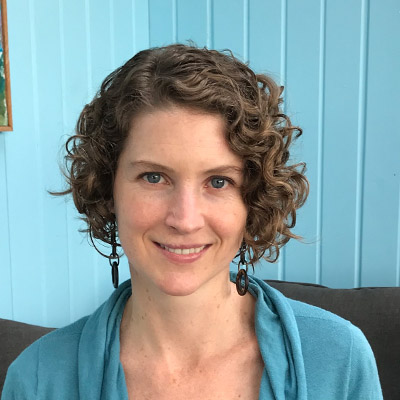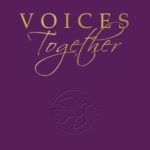This article is part of our series on Voices Together, the new worship and song collection from MennoMedia, in partnership with Mennonite Church USA and Mennonite Church Canada.
 Katie Graber is an ethnomusicologist who studies race and ethnicity in a variety of contexts, including Mennonite music, American music and European opera. She teaches classes on Western music history and world music at the Ohio State University, and she leads singing at her church in Columbus, Ohio. She co-directs the Anabaptist Worship Network and chaired the Intercultural Worship committee for the Voices Together project.
Katie Graber is an ethnomusicologist who studies race and ethnicity in a variety of contexts, including Mennonite music, American music and European opera. She teaches classes on Western music history and world music at the Ohio State University, and she leads singing at her church in Columbus, Ohio. She co-directs the Anabaptist Worship Network and chaired the Intercultural Worship committee for the Voices Together project.
Anneli Loepp Thiessen is a Ph.D. student in Interdisciplinary Music Research at the University of Ottawa, where she studies diversity and equity in the contemporary worship music industry. She is a co-director of Anabaptist Worship Network and director of Ontario Mennonite Music Camp. Anneli was honored to serve as a committee member for the Voices Together hymnal.
_____________________________________________________________________________
The classical music world is starting to pay attention to the diversity – or lack thereof – of composers on typical concert programs. While favorites by European composers of the past continue to be performed on repeat, old and new compositions by people of a variety of races and genders continue to be overlooked. The Institute for Composer Diversity analyzes the seasons of major orchestras and posts them online, noting the numbers of compositions written by underrepresented groups (see charts here). Some people ask why this matters – isn’t music just music, no matter who wrote it?
There are many reasons why representation matters in music: to represent audiences more realistically in the programming, to encourage young composers, to work towards equal opportunity for people past and present, and simply to hear more wonderful music.
When I hear a new piece of music by a new-to-me composer, I sometimes actually feel angry that I’d previously been deprived of the experience. I’ve been a music student and teacher for decades; how could I not have heard of Florence Price’s award-winning Symphony in E minor (1932) or Augusta Holmes’ symphonic poem “Pologne” (1883)? If I didn’t actively seek out new music, I would miss out on works like Gabriela Ortiz’s orchestral work “Antrópolis” (2019) and Nkeiru Okoye’s opera “Harriet Tubman” (2014).
In church music, we have additional theological reasons to think about composer diversity. Our corporate worship should embody and celebrate who God is, as well as who we are and who God calls us to be. As communities, we should always be considering who is invited into that “us” and how our actions as a community implicitly and explicitly name who we are. One way we can be more inclusive is to sing songs by writers and composers representing the diversity of God’s people.
“Songs by women” is just one category the Voices Together committee tended to, as we sought to create a diverse collection of congregational music. Anneli Loepp Thiessen gave a lecture recital on this topic in 2021 for Conrad Grebel University College’s virtual concert series; you can read more and view the lecture here to hear the backgrounds and recordings of some songs with which she has personal connections:
- VT #142 “God, Grant Us Mercy” by Kassia (8th century).
- VT #376 “O Holy Spirit, Root of Life” by Hildegard of Bingen (12th century) and Anneli Loepp Thiessen.
- VT #630 “Everlasting God, On You I Call” by Annelein of Freiburg (16th century) and Anneli Loepp Thiessen.
- VT #603 “Still My Soul” by Katie Graber and Charlene Nafziger.
In the lecture recital, Loepp Thiessen highlights the statistics of how many women have been featured in past hymnals, as well as in Voices Together. She notes that in Hymnal: A Worship Book, 14.8% of text writers are women, along with 9% of tune writers. In Voices Together, 27.2% of text writers and 18.4% tune writers are women. While the number of women has roughly doubled between collections, there is still much work to do in order to achieve gender balance.
We don’t expect that any individual congregations will regularly sing all of the songs in Voices Together, so communities can influence their own statistics by regularly trying new songs written by people of various races and genders. Congregations can seek out the underrepresented contributors from the collection and invite their voices into corporate worship.
As churches build their canons of songs, they have the opportunity to elevate many voices. This could involve learning a new song, learning a song in a new language, or repeating songs so that they can become well known and loved. With community commitment and support, together, we can sing with the voices that have been missing from our published worship collections for too long.
If you’re interested in reading more on representation in worship, see Katie Graber and Anneli Loepp Thiessen’s essay “Making Room: Minority Voices in Your Congregation’s Worship” in MennoMedia’s Spring 2022 Leader Magazine.
For more information on Voices Together, visit voicestogetherhymnal.org.
The views and opinions expressed in this blog belong to the author and are not intended to represent the views of the MC USA Executive Board or staff.


